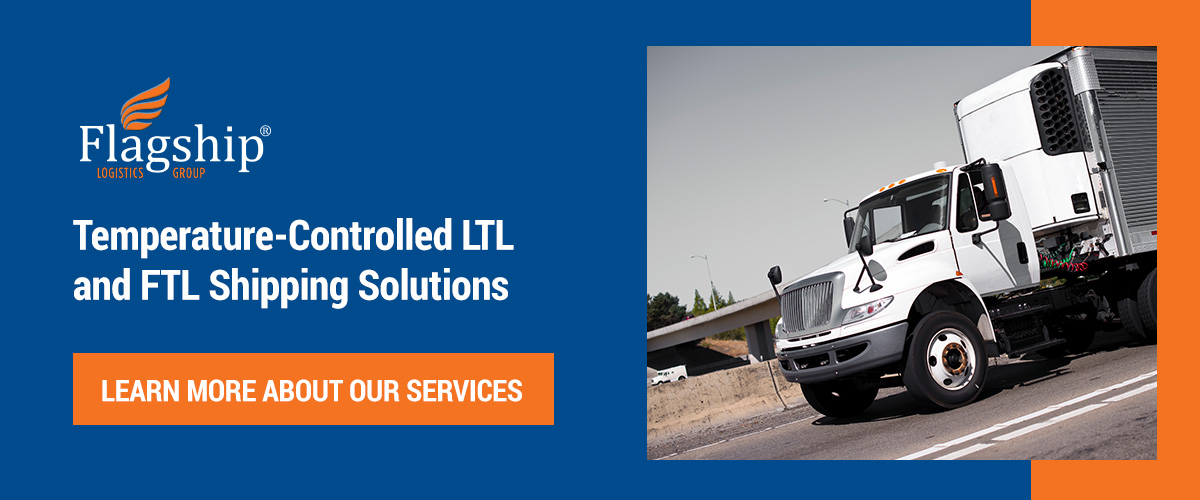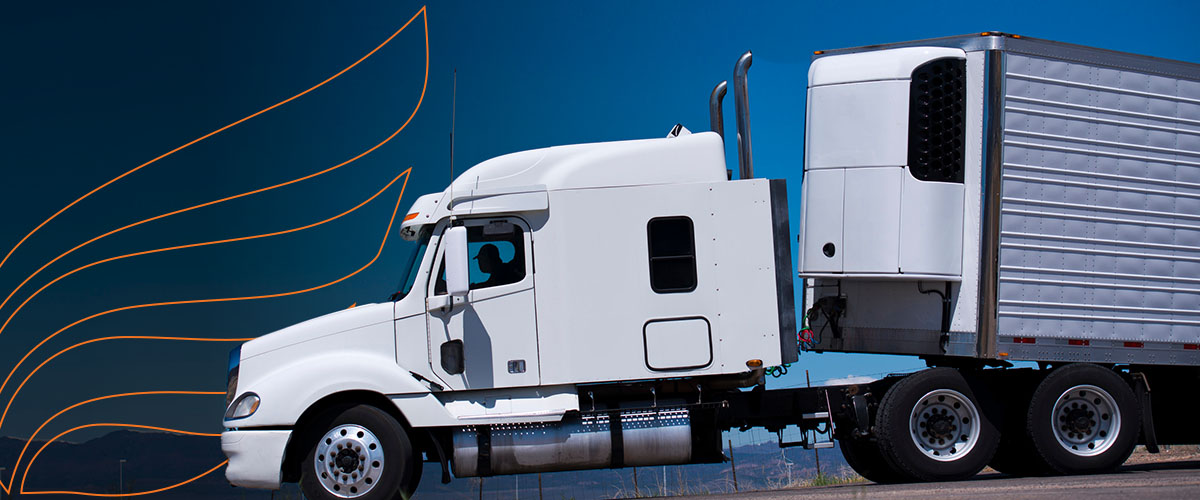Table of Contents
1. The Cold Chain Logistics Process
2. Shipping Cold Products to Grocery Stores
3. Why Proper Grocery Logistics Matters
4. LTL and FTL Shipping
5. Outsourcing Cold Chain Logistics
If you manufacture frozen or chilled food products, you should understand the nuances of the cold chain, adopt a precise shipping process and adhere to essential details for success. This knowledge can help you get your products into big-box stores safely and successfully. Below, we discuss shipping and transportation options and the importance of logistics services.
Explore Our Logistics Services
Understanding the Cold Chain Logistics Process
Frozen and chilled food products demand a unique grocery store supply chain called the cold chain. This process involves maintaining a consistent temperature from production to consumption, ensuring product safety and quality.
Therefore, you should choose a third-party logistics provider with a track record in cold chain logistics to transport your frozen and chilled products. A quality cold chain logistics service provider will incorporate the following points into their services to ensure product integrity:
- Load optimization: Efficiently organizing products within the truck allows for proper air circulation and even temperature distribution.
- Route planning: Routes that minimize transit time and exposure to temperature variations are optimal.
- Delivery schedules: Proper coordination with grocery stores ensures timely arrivals during operational hours.
- Handling procedures: Logistics teams are trained to properly handle temperature-sensitive products during loading and unloading.
- Emergency protocols: Clear protocols for responding to temperature deviations or equipment failures help mitigate risks and prevent product spoilage.
- Communication: Constant communication between the logistics team, carriers and retail stores helps address unforeseen issues promptly.
- Documentation: Keeping thorough records of temperature logs, delivery times and any incidents during transportation is essential for quality control and regulatory compliance.
How to Move Your Products to Grocery Stores
After ensuring products meet all necessary food safety standards, manufacturers carefully package and seal their products in insulated containers and pallets to help maintain their temperature during transit. Following strict guidelines for frozen food logistics is imperative. Proper packaging on the manufacturer’s part is vital to preserve product freshness and prevent contamination.
The logistics provider collects these pallets and loads them onto trucks with advanced temperature-regulating systems to ensure consistent temperatures. Temperature monitoring devices can be used to track conditions in real time, enabling prompt intervention in case of deviations. The trucks follow a carefully planned route to optimize delivery times. Upon arrival at the store, the goods are promptly unloaded straight into specially designed cold storage areas.
Cold Storage in Albuquerque, NM
Why Proper Logistics Matters
When considering where grocery stores get their food, it’s easy to see that the logistics process is the backbone of the big box stores’ supply chain. The majority of food available in grocery stores is delivered through various shipping processes that involve logistics suppliers. Without the right logistics partners, companies would struggle to get their products on shelves.
Accurate temperature control, packaging and transportation are paramount when shipping perishable items, especially frozen or chilled products. Choosing the right shipping mode, like temperature-controlled trucks or specialized containers, is essential to maintaining product integrity during transit.
LTL and FTL Shipping
Two main options for shipping include less-than-truckload (LTL) and full-truckload (FTL) shipping. Both LTL and FTL shipping have unique advantages. Manufacturers can choose their preferred transportation method by taking the following variables into consideration:
- Freight size: LTL is a good choice for smaller shipments, while FTL works best and more effectively when containers take up an entire truck.
- Urgency: LTL shipments may involve multiple stops. FTL is a good option for urgent shipments, as this method makes no intermediate stops.
- Budget: LTL is the cost-effective choice for smaller shipments, whereas FTL provides manufacturers with an entire truck.

In some cases, manufacturers may choose LTL/FTL shipping, which makes use of both options. Understanding which type of shipping is optimal for your operations is important to ensure you get the most benefits, so you should consult with a professional logistics provider to evaluate your choices.
Benefits of Hiring a Third-Party Provider for Cold Chain Logistics
Outsourcing cold chain logistics to a specialized third-party logistics (3PL) provider offers numerous advantages to the manufacturer. This collaboration enables streamlined operations, reducing risk and ensuring products reach stores efficiently and in optimal condition. Additional benefits include:
- Expertise: Quality 3PL providers possess in-depth knowledge of cold chain requirements, ensuring products remain safe and compliant. They have resources in both storage and transportation to maintain the integrity of temperature-sensitive products throughout the supply chain.
- Infrastructure: Established 3PL providers have the necessary infrastructure, including temperature-controlled warehouses and transportation, to maintain product quality.
- Risk mitigation: Working with a 3PL provider helps manufacturers mitigate risks by providing advanced tracking, minimizing the chances of temperature fluctuations and ensuring timely deliveries.
- Budget considerations: Partnering with a logistics company can mitigate investments in transportation and warehousing.
A meticulously managed logistics process allows manufacturers to respond quickly to market shifts and foster stronger customer relationships. Overall, enlisting a 3PL provider for cold chain logistics allows you to focus on core competencies like production, product development and growth.
Temperature-Controlled LTL and FTL Shipping Solutions

Getting frozen or chilled food products onto store shelves requires a meticulous approach to logistics. If you’re searching for a way to safely transport your products to grocery stores, partnering with a quality 3PL provider is the best solution. This way, you can rest assured knowing your products are in trustworthy hands.
With over 30 years of expertise and top-notch industry standards, Flagship Logistics Group is your go-to choice for product transportation and delivery. We provide comprehensive logistics and warehousing services that help you focus on other areas of your business. Partnering with us means you get access to expert logistics advice and support when you need it.
Learn more about our services today to see how working with a 3PL provider may be the best option for you. If you’re ready to get started, contact one of our specialists at 763.951.7754.
